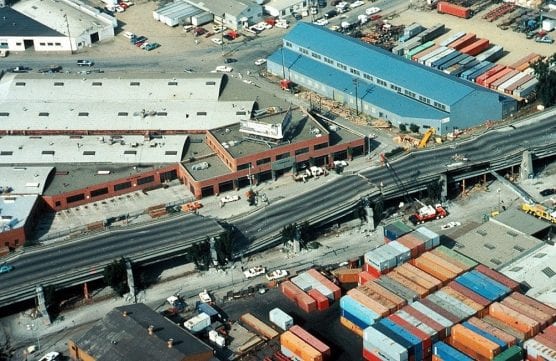Marking the 30th anniversary of the deadly Loma Prieta earthquake and its devastation to buildings, bridges, freeways and lives in the San Francisco Bay Area, California officials on Thursday launched a long-awaited statewide warning system that will send cellphone alerts before earthquakes.
Officials say anyone in California that downloads the new cellphone application will receive warnings if they are close enough to feel earthquakes that are magnitude 4.5 or higher. The system relies on a network of ground motion sensors across the Golden State and is the nation’s first statewide early-warning system for temblors.
“Today I’m proud to be with you all as California again takes arguably one of the most significant next steps toward making our citizens and communities safer and more prepared for earthquakes,” said Mark Ghilarducci, director of California Governor’s Office of Emergency Services.
Developed by researchers at the University of California, Berkeley, the California Institute of Technology and the U.S. Geological Survey, the system aims to give Californians the ability to “drop, cover and hold on” before shaking begins. The next time an earthquake strikes near a major California city, the system could give millions of Californians valuable seconds to prepare.
“This is about 10 seconds, this is about 15 seconds, this could be as much 20 seconds of early warning,” said California Gov. Gavin Newsom.
Newsom, who was in San Francisco during the 1989 quake, said the system could give utilities time to shut down natural gas and electrical lines, doctors the ability to stop procedures, and public transit systems to slow trains if necessary.
In the case of the Loma Prieta quake, experts believe the warning could have given people in San Francisco an estimated 15-second notice before shaking began.
The epicenter of the 1989 quake was about 60 miles away from San Francisco, in the Santa Cruz Mountains, the magnitude 6.9 temblor damaged a section of the Bay Bridge and collapsed a major freeway in Oakland during rush hour. The earthquake caused 63 deaths and injured more than 3,700, but the total could have been much higher as many Bay Area residents were waiting for the start of a World Series game between the Oakland Athletics and San Francisco Giants.
Los Angeles area residents have been able to receive similar alerts through an app called ShakeAlertLA, which got its first real test run during the series of strong quakes near the town of Ridgecrest this past July. The statewide app will be called MyShake, and warnings will come through a wireless emergency alert system and through the MyShake app.
The state has been spent six years and $46 million on the system and Newsom says it will cost taxpayers $17 million per year to operate going forward. The former mayor of San Francisco urged residents to download the app from iTunes or Google Play by the end of the year.
“This is a good investment, a wise and appropriate investment,” Newsom said during a press conference near the Bay Bridge.
The Bay Area has been ravaged by two major earthquakes in modern history, including a 7.9 earthquake in 1906 that killed an estimated 3,000 and destroyed much of San Francisco. The idea for a warning system was first pitched following that disastrous quake, while Mexico and Japan have operated offshore nationwide alert systems for several years. California’s system is based on hundreds of underground sensors and more are being installed in states like Oregon and Washington.
Officials said the 30th anniversary of the Loma Prieta earthquake was a fitting moment to introduce the system, and because of a recent series of earthquakes have hit the Golden State in the last several months. Over 10 million Californians also participated Thursday in a yearly earthquake drill called the Great ShakeOut.
“We feel we are on the leading and cutting edge in terms of the ability to utilize this technology, but it is only as good as you,” Newsom said. “If you download that app, we now have another point of contact and we are now all part of this remarkable capacity to iterate, experiment and to advance science in real-time to make us all safer.”
— By Nick Cahill
Like this:
Like Loading...
Related





 Tweet This
Tweet This Facebook
Facebook Digg This
Digg This Bookmark
Bookmark Stumble
Stumble RSS
RSS


























REAL NAMES ONLY: All posters must use their real individual or business name. This applies equally to Twitter account holders who use a nickname.
0 Comments
You can be the first one to leave a comment.